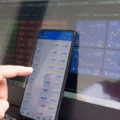
Technical analysis plays an important role for traders using contracts for difference, or CFDs, to speculatively trade on fluctuating markets. As CFDs allow individuals to gain exposure to stock, forex, commodity and index price movements without owning the underlying asset, applying analytical techniques can provide valuable insight. While past performance does not guarantee future results, technical analysis provides a valuable framework for developing trading strategies and managing risk. Traders can use indicators and patterns to gauge momentum and identify potential entry and exit points by waiting for confirmation of breaks of defined resistance or support levels.
To start trading CFDs, you can sign up for a live account with UAE Broker ADSS. Remember that all forms of investment come with risk and that there is never a guarantee of profits in trading. Therefore, traders should ensure they understand their risk tolerance and be prepared for capital loss. They should also read into risk management strategies and apply the appropriate ones they may need.
Why use technical analysis in CFD trading?
Technical analysis fits well with CFD trading due its speculative nature versus long-term investing. With no expiration dates, traders can hold positions as long as their analysis remains valid. This allows flexibility to profit from short-term trends identified on charts. However, due to intrinsic gaps in pricing and liquidity issues, traders must be aware that slippage or a wider spread could occur when opening or closing large positions.
Through practice, traders learn to recognize recurring patterns in price action. Common examples are head-and-shoulders tops which often precede downtrends, and inverse or standard cup and handle formations which can act as continuation patterns. The Fibonacci retracement also applies the Fibonacci sequence to gauge retracement support levels after significant moves, potentially revealing strong levels of buying interest.
Types of technical indicators
By studying historical charts, traders aim to identify trends and price patterns that may signal potential reversals or continuation. Technical analysis typically includes examining common indicators like moving averages, Bollinger Bands, and momentum oscillators.
Moving averages work by smoothing out short-term price fluctuations and noise in data. They take the average closing price over a certain number of periods, usually days or weeks. The most common types are simple moving averages (SMA) and exponential moving averages (EMA). SMA gives equal weight to all data periods, while EMA assigns more importance to recent prices.
Bollinger Bands use a moving average and standard deviation bands to help identify overbought and oversold levels in a security’s price. They were developed by John Bollinger in the 1980s and have become a popular technical analysis tool.
Specifically, Bollinger Bands comprise:
- A simple moving average (typically 20-period SMA) which acts as the middle band. This tracks the general price trend.
- An upper band set at a predetermined number (usually 2) of standard deviations above the moving average.
- A lower band set the same number (2) of standard deviations below the moving average.
When a security’s price nears or touches the outer bands, it can indicate an overbought or oversold extreme. Traders may see this as signaling a potential reversal. The bands also contract during periods of low volatility to hug prices more closely, and they expand during high volatility to provide more room for price excursions. This helps identify normal versus extended price behavior.
Oscillators measure momentum to help identify divergences which can alert traders to potential trend changes. For example, the Relative Strength Index indicates if an asset is considered overbought above 70 or oversold below 30. Traders then look for the RSI to move in opposite direction of the price to potentially call a reversal. By using multiple timeframes including the daily, 4-hour and hourly charts, technical analysts develop a composite picture.
Key strength of using technical analysis in CFD trading
A key strength of technical analysis when trading CFDs is its objective, math-based approach free from emotion or bias around a company’s outlook. Traders rely purely on what the charts are showing through indicators and recognizable patterns rather than broader news-based factors. Though it is by no means a rule, it so happens that patterns in charts can recur over time, or they can provide insight into possible future price movements of instruments. Combined with sound money management including strict stop losses, technical analysis provides a structured framework for developing forward-looking CFD strategies in various asset classes.
Final words
Overall, technical analysis serves as a valuable lens for CFD traders navigating shifting market conditions amid high leverage and potential risk. Its objective, quantifiable techniques align well with the nimble, speculative nature of tracking underlying price movements without ownership. With diligent practice, traders can develop savvy CFD strategies harnessing the power of historical chart analysis.








